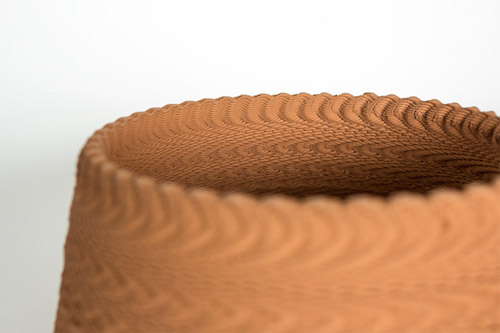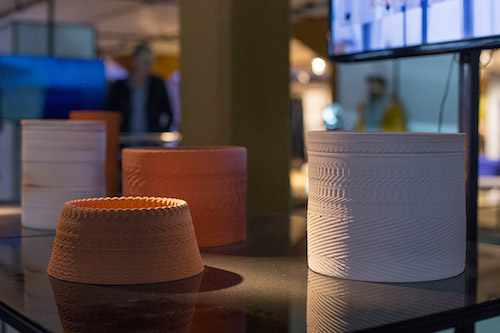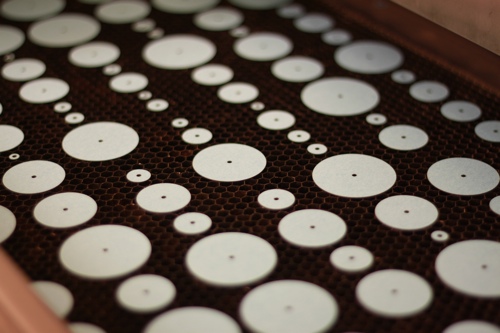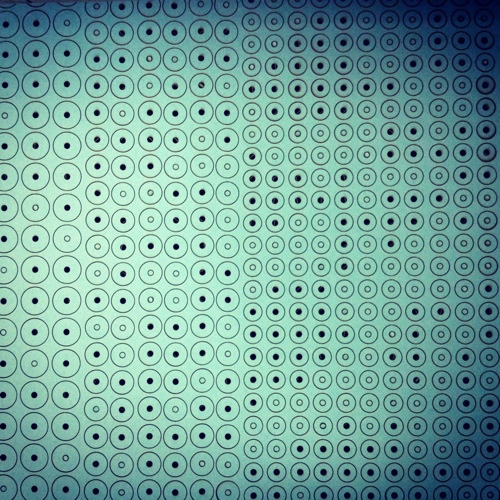Solid Vibration




 Saturday, January 24, 2015 at 15:00 tagged
Saturday, January 24, 2015 at 15:00 tagged  documentary,
documentary,  electronics,
electronics,  interactive,
interactive,  objects,
objects,  peter,
peter,  vogel
vogel 
We’ve seen some work by Peter Vogel on the site before, but for some reason I forgot about it, until I came across this documentary on the sound sculptures of Peter Vogel. His interactive installations are quite magical, and what I like about the documentary is that every part of it is demystified.
“Fascinated by the work of English neurophysiologist William Grey Walter (1910-77), who invented small robots (called Machine Speculatrix) that simulated basic neurophysiological behaviour, Vogel was intrigued to discover that, with the help of sound and light sensors, such machines could react to the world. Thus, at a time when many artists were pursuing the idea of the viewer as active participant, Vogel began to embrace interactivity as a major theme in his work. And all of this prompted him to move away from painting and start to create picture-like interactive objects.”
– Jean Martin. Full essay: vogelexhibition.weebly.com/jean-martin-peter-vogels-interactive-sound-art.html
From very simple components, Vogel creates complex interactive works with a lot of character and depth. Very inspirational to see.
 Sunday, August 31, 2014 at 14:58 tagged
Sunday, August 31, 2014 at 14:58 tagged  installations,
installations,  objects,
objects,  soundart,
soundart,  tv
tv 

Static electricity affects everyday materials in curious ways – hair stands on end when rubbed with a balloon; laundered clothing clings together if an antistatic sheet is not tossed into the dryer; a static shock transmits from a finger after one drags their feet across the carpet…
 Friday, June 15, 2012 at 16:15 tagged
Friday, June 15, 2012 at 16:15 tagged  installations,
installations,  objects
objects 
Melissa Dubbin and Aaron S. Davidson came up with Volumes for Sound while looking to find a physical representation of immaterial things. The objects can be seen as sculptures which can form all kinds of different structures, but are equipped with speakers as well.

This summer Volumes of Sound is exhibited as part of the 2012 Reykjavík Arts Festival in Iceland. Various sound artists will be asked to compose a piece specifically for the installation, which plays eight channels of audio.


Another nice looking physical representation of a sound wave is created by Andrew Spitz from { sound + design } in collaboration with interaction designer Andrew Nip. Paper Note is made using a laser cutter to create discs of paper who form the waveform when joined on a piece of string.

The video below gives a good impression of the process of creating the Paper Note:
Richard Eigner was the man behind Denoising Field Recordings. He is also part of the electronic Music duo Ritornell. Katarina Hölzl designed some wonderful new business cards for them. By giving someone their business card they now give away a tangible piece of their music. Sadly, not everyone has that nice custom built wooden music box at home to play the cards. It’s a lovely idea though.

The Phonograph CD Player has been around for a while, but I had never seen it before. In these days most music we play cannot even be touched anymore, and the CD is slowly becoming obsolete. This Phonograph CD player created by Yong Jieyu & Ama Xue Hong Bin brings us back to the world of vinyl and the phonograph.
The player is made from the insides of a portable CD player. The CD has to be put on the player upside down, so the laser on the ‘tone arm’ can access it and it moves fron the inside out. This is what the player looks like with no disk:
 Sunday, November 7, 2010 at 0:05 tagged
Sunday, November 7, 2010 at 0:05 tagged  installations,
installations,  kinetic,
kinetic,  objects
objects Another wonderful installation by Zimoun, this time created using 186 prepared dc-motors, cardboard boxes 60x60x60cm, apparently this is also the title of this sound installation. The audience can use their imagination.
If you have not done so already, be sure to also read Zimoun’s answers to the Five Sound Questions, and while you’re at it, the included video gives a nice overview of his work. His work can be seen at upcoming events in Venezuela, Switzerland, Germany, Estonia, the Netherlands, Poland and the United States.
 Wednesday, October 20, 2010 at 20:43 tagged
Wednesday, October 20, 2010 at 20:43 tagged  objects
objects 
I am a friendly man, but The BoomCase by Mr. Simo makes me fantasize about a smartly dressed man carrying this suitcase, entering a train, sitting next to one of those kids playing inferior ‘urban’ beats on his inferior mobile phone speaker, waiting five minutes, than hitting a button to blast him away with 200 Watts of Stravinsky’s Rite of Spring.
 Tuesday, May 4, 2010 at 13:42 tagged
Tuesday, May 4, 2010 at 13:42 tagged  installations,
installations,  objects
objects 
At this year’s Sonic Acts festival I had an encounter with Rechnender Raum, a wonderful, seemingly living installation created by Ralf Baecker, operating similar to a basic artificial neural network. The open construction allows visitors to see every single moving detail of the machine.
 I was amazed by the complexity of the fragile wooden structure and the network of strings, all connected to the moving outline of a torus in the center of the installation.
I was amazed by the complexity of the fragile wooden structure and the network of strings, all connected to the moving outline of a torus in the center of the installation.
While Rechnender Raum (German for calculating space) gives us a lot to look at, and it is nice to walk around the structure and inspect every small element up-close, I also enjoyed the soft, insect-like chirping of the small electronic motors keeping the network alive and slowly moving.